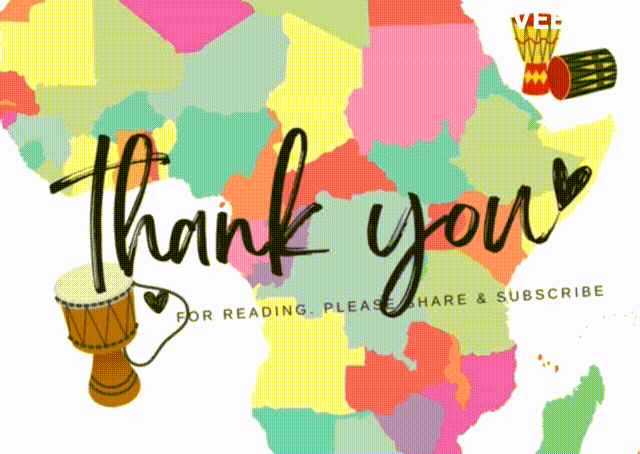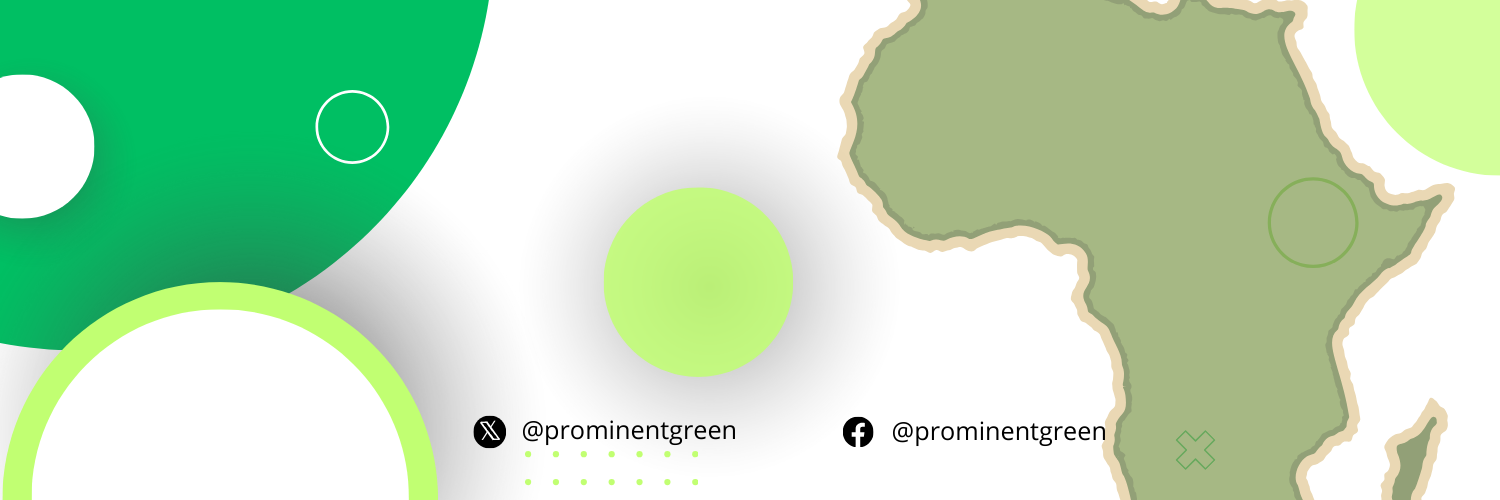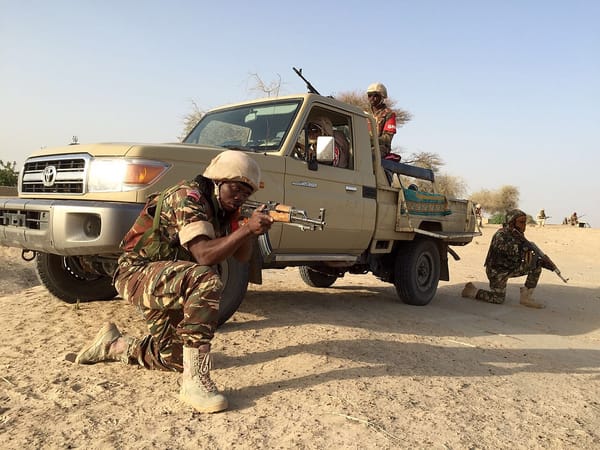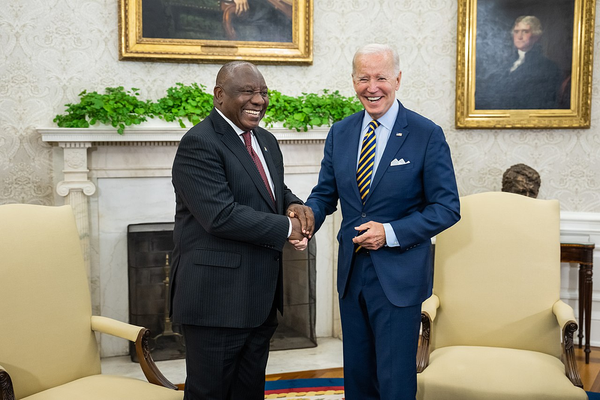ETHIOPIAN PEACE DEAL, AN AFRICAN MODEL.
The Pretoria agreement was made specifically for the Ethiopian conflict taking into account the history, grievances, losses, and compromises reached by the belligerent parties. However, the template can be adopted and adapted for other conflicts, particularly in Africa.

The cease-fire agreement in the Ethiopian conflict is a remarkable success story in the African continent. After 2 years of intense fighting and suffering, the belligerents – Ethiopia and the Tigray People’s Liberation Front (TPLF) – have agreed to The Ethiopia–Tigray Peace Agreement. This is a significant achievement and could provide a model for other state-based conflicts in Africa.
The conflict in Ethiopia has been ongoing since the early 2000s, when the TPLF, a rebel group, clashed with the Ethiopian government over political and economic issues. The fighting intensified in November 2020 when the Ethiopian government launched a military offensive against the TPLF, leading to the displacement of over 2 million people.
ORIGIN OF THE CONFLICT
According to official sources, the TPLF was founded on February 18, 1975, in Dedebit, northwest Tigray. It developed from a small group of men into Ethiopia’s most potent armed “liberation” movement in under 16 years. From 1989 to 2018, it served as the leader of the Ethiopian People’s Revolutionary Democratic Front EPRD.

As the Coordinating Committee of the Armed Forces, Police, and Territorial Army, the Derg was founded in June 1974 by officials of the Ethiopian Army and Police, initially under the direction of chairman Mengistu Haile Mariam. During widespread demonstrations across the country on September 12, 1974, the Derg ousted the Ethiopian Empire’s government and Emperor Haile Selassie. Three days later, the Derg legally changed its name to the Provisional Military Administrative Council.
The Derg overthrew the monarchy in March 1975 and founded Ethiopia as a Marxist-Leninist state, with itself serving as the leading party in a provisional administration. Priorities included ending feudalism, raising literacy levels, nationalizing the country, and implementing a comprehensive land reform that included resettling and urbanizing people from the Ethiopian Highlands.
In 1977, Mengistu was elected chairman and he initiated the Red Terror (Qey Shibir); Tens of thousands were imprisoned and murdered without trial as part of a political repression operation to eradicate political opponents. The TPLF was instrumental in overthrowing the Derg in 1991 after 15 years of civil war.
The TPLF ousted the People’s Democratic Republic of Ethiopia’s government on May 28, 1991, with assistance from its former partner, the Eritrean People’s Liberation Front (ETLF), and installed a new administration that ruled Ethiopia until 2018.
The National Election Board of Ethiopia cancelled the TPLF registration as a political party on January 18, 2021, citing the party’s leadership’s violent and rebellious conduct against the federal government in 2020 as well as a lack of representation. The TPLF was officially declared a terrorist group by a legislative resolution that was officially passed by the Ethiopian House of People’s Representatives on May 6, 2021.
Of course, this is a summary of the origin of the latest conflict, some nuances can not be captured by the nature of the limited space of this article.
THE COST OF THE WAR
Wars are very costly endeavours in terms of human and capital losses. For instance, the financial cost of all the wars America has been in since 9/11 is estimated to be $8 trillion. To put that figure in context, it is estimated that $330 billion could help a long way to ending world hunger by the year 2030. According to senior political analyst Louw Nel of the consulting firm NKC African Economics, Tigray’s conflict has cost the nation $2.5 billion.

According to the European Union report on the conflict, nearly 3 million people were displaced, nearly 500 thousand dead and an estimated 20 million people are in dire need of assistance due to the conflict, locust invasion, floods, and drought. The conflict had the potential to draw in other countries in the Eastern African Region with Eritrea already drawn into the fighting and the impact of the war felt in Sudan and Somalia.
It is against this backdrop that the world welcomed the news of a peace agreement reached by both belligerent parties on November 2, 2022. Olusegun Obasanjo, the AU representative for the Horn of Africa, Uhuru Kenyatta former Kenyan president, Mike Hammer, the United States representative for the Horn of Africa, and Phumzile Mlambo-Ngcuka, a former deputy president of South Africa, all worked together to mediate the negotiations. The chief negotiators were Ethiopian national security advisor Redwan Hussein and TPLF spokesperson Getachew Reda.
THE PRETORIA PEACE AGREEMENT
The peace agreement calls for a cessation of hostilities and the withdrawal of Ethiopian forces from Tigray. It also sets out a framework for political talks to resolve the conflict. The cease-fire agreement is a significant achievement for Ethiopia and the continent as a whole. It demonstrates that conflicts can be resolved peacefully, without resorting to violence. It also serves as a reminder that dialogue and compromise are essential if lasting peace is to be achieved.
The Ethiopian cease-fire agreement could serve as a model for other conflicts in Africa. Speaking about the peace agreement, President Olusegun Obasanjo in a statement issued by Kehinde Akinyemi, his media aide, said
“Any pessimist can dig holes in the agreement, undermine it and try to prevent it from being implemented. But no agreement between two belligerents for peace will ever be regarded as perfect by all because it must, necessarily, be based on compromise.
“We can, however, strive for perfection in the implementation of the agreement in order to achieve the objectives of peace, security, constitutionality, stability, welfare and well-being, development, and progress of all concerned, especially the ordinary people of Ethiopia no matter where they live.”
It shows that despite the immense challenges facing the continent, progress is possible if the right approach is taken, which is ‘dialogue’. The agreement is an example of the power of diplomacy and negotiation, which should be embraced if lasting peace is to be achieved. The cease-fire agreement also highlights the importance of international support.
The agreement was reached with the help of the African Union, the United Nations, and other international actors. This underlines the need for global involvement in resolving conflicts, as well as the importance of regional organizations such as the African Union in helping to facilitate dialogue and build trust between the parties.

A TEMPLATE FOR CONFLICT RESOLUTION
The Pretoria agreement was made specifically for the Ethiopian conflict taking into account the history, grievances, losses, and compromises reached by the belligerent parties. However, the template can be adopted and adapted for other conflicts, particularly in Africa. The agreement can be divided into 7 main parts. The following will be a summarization of the parts and the potential application to other conflicts:
Elders of the land: There was a team of mediators willing and ready to bring both belligerent parties to the negotiation table. The very respectable team led by the charismatic President Olusegun Obasanjo, selflessly mediated negotiations and ensured a workable, conflict-ending agreement was reached. That team consisted of respectable individuals representing regional and international political players with an interest in ending the conflict using mediation.
According to the International Journal of Peace Studies; “There are several peaceful ways to manage conflicts. These include avoidance, negotiation, mediation, arbitration, and adjudication. Of these mediation offers many advantages. It has been studied by scholars and students of political science, psychology, business management, and law as well as practitioners."
This is the first lesson; credible and distinguished individuals backed by regional and international political organizations of noble intentions must rise to the occasion of leading ceasefire talks and negotiations in conflict resolution in Africa.
Ceasefire and restoration of constitutional order: Not much talk can happen if the guns aren’t silenced. The willingness to talk should always be greater than the willingness to fight. In the agreement, the Tigray forces agreed to a restoration of constitutional authority, disarmament, and cessation of all hostilities while the federal government agreed to ensure much-needed human aid and relief flows to Tigray, and the region is adequately represented at the federal level moving forward.
As the saying goes; ‘the road to hell is paved with good intentions’ but those ‘good intentions’ must be discussed and compromises made with them in mind or else everything goes to hell.
Disarmament: The agreement stated that the Tigray forces disarm and then reintegrate into the Ethiopian army. This was a critical point in the agreement as a cessation of hostilities without disarmament will inevitably lead to a resurgence of violence.
All parties must put down their arms. This also will ensure that the territorial integrity of Ethiopia is maintained according to Article 2(4) of the United Nations Charter, helping to contain the conflict to a primary territory.
Recognition: The deal, which is between the Ethiopian government and the TPLF, makes no mention of an elected “government of Tigray.” One of the key grounds of contention in the war was the government’s refusal to acknowledge the legitimacy of the TPLF’s victory in the preceding regional election in Tigray.
It is important for both parties to ‘recognize’ each other’s grievances, that’ll foster an air of mutual respect needed to facilitate negotiations. This skirts article 2(1) of the United Nations Charter; the right to self-determination of a people, however, the TPLF had graciously compromised in this regard in order to allow the negotiations for a cease-fire.
The human cost: Humans suffer most from wars. Displacement, death, destruction, and all attendant waste in human capital, time, infrastructure, and nature. These losses do not stop once an agreement is reached. There are still hundreds, thousands of people even, who need humanitarian aid. Usually, aid will trickle in at first due to several factors including destroyed infrastructure, low levels of trust among the people, and the challenge of setting up the logistics of pushing aid into the areas that need it.
However, both parties have agreed to protect lives and properties and help facilitate the distribution of aid. The federal government has reconnected the regional capital Mekelle, to the electricity grid. Banking services and other crucial services have also been restarted in parts of Tigray. This is important, as it shows the willingness of both parties to negotiate and follow through with action.
It is easy for the adversely affected party to despair because of delays and challenges faced in restoring services and getting aid to those who need it, but the sustained effort in implementing the agreement would usher in a speedy return to normalcy. Patience and a willingness to follow through is crucial.
Reconciliation and Justice: The agreement provides for a “transitional Justice Policy” aimed at obtaining the truth, ensuring justice, compensating victims, promoting harmony, and healing. Justice is important as there are widespread reports and allegations of human rights violations on both sides and the affected people would demand justice and closure.
However, it is important to ensure justice delivered will foster reconciliation and truth. The implementation of the agreement is being monitored by an AU committee led by President Olusegun Obasanjo. Justice and reconciliation are crucial aspects of any agreement for the cessation of hostilities in any conflict.
International dimensions: In every conflict, there are parties who ‘benefit’. Most are local to the conflict, but there are usually international ‘bad’ actors as well. The conflict resolution should be geared towards resolving the conflict locally and cutting out international actors who may have an interest in fueling the conflict. The Ethiopian peace agreement didn’t mention how Eritrea which fought TPLF alongside the Ethiopian government will be handled.
The working theory is Eritrea viewed the conflict as an opportunity to hit back at TPLF which fought against Eritrea in its war of independence against Ethiopia from September 1, 1961, to May 29, 1991. However, the agreement secured a crucial ceasefire and there has been a mounting international call for Eritrean troops to leave Ethiopia. The lesson here is to ensure that agreements reached are tailored for the local population while cutting out bad actors.

A SILENT INTERNATIONAL PARTNER
Despite having a $13.7 billion credit exposure to Ethiopia according to data compiled by the Global Development Policy Center at Boston University, China has remained eerily silent about the Ethiopian civil war. According to reports, the Export-Import Bank of China withheld an additional $339 million in committed credit last year, according to a Finance Ministry official, because of the nation’s financial problems.
Through the Group of 20 common framework committee, which China is co-chairing, Addis Ababa is currently requesting debt relief. However, because of worries over Ethiopia’s civil conflict, progress has slowed. Obviously, Ethiopia will have to contend with its huge Chinese debt, fall out of the war, and the impact of the drought across the country, and, the debt will only serve to compound the country’s recovery. Given the situation Ethiopia is in, it would seem like China would logically take a stand with, and help Ethiopia to stabilize, but it has remained very silent.
As a lender, China is known to extend the maturity of loans to troubled borrowers instead of supporting economic restructuring that may result in parts of the loans being written off, and help stabilize the ailing country albeit painfully.
This undoubtedly fuels the notion that the Chinese debt trap is a real thing. This is a bonus lesson; debt traps aren’t a new phenomenon on the international stage, however insidious the trap is set up, participating countries must always consider their long-term survival and independence over immediate gratification.
CONCLUSION
The cease-fire agreement in Ethiopia is a positive step forward in the search for peace in the continent. It could serve as a template for other inter-state conflicts of this nature in Africa, showing that peace is possible if the right approach is taken. It is a reminder that dialogue, compromise, and international support are essential if lasting peace is to be achieved.
We will closely track the situation in Ethiopia along with other significant news stories across Africa and the African diaspora. Stay informed by subscribing to our weekly newsletter, "News From Around The Motherland," to stay updated on opinion articles and in-depth explorations of diverse African subjects.

If you enjoyed this article, kindly subscribe to our weekly newsletter: "News From Around The Motherland," to stay updated on opinion articles and in-depth explorations of diverse African subjects. Thanks for reading.





